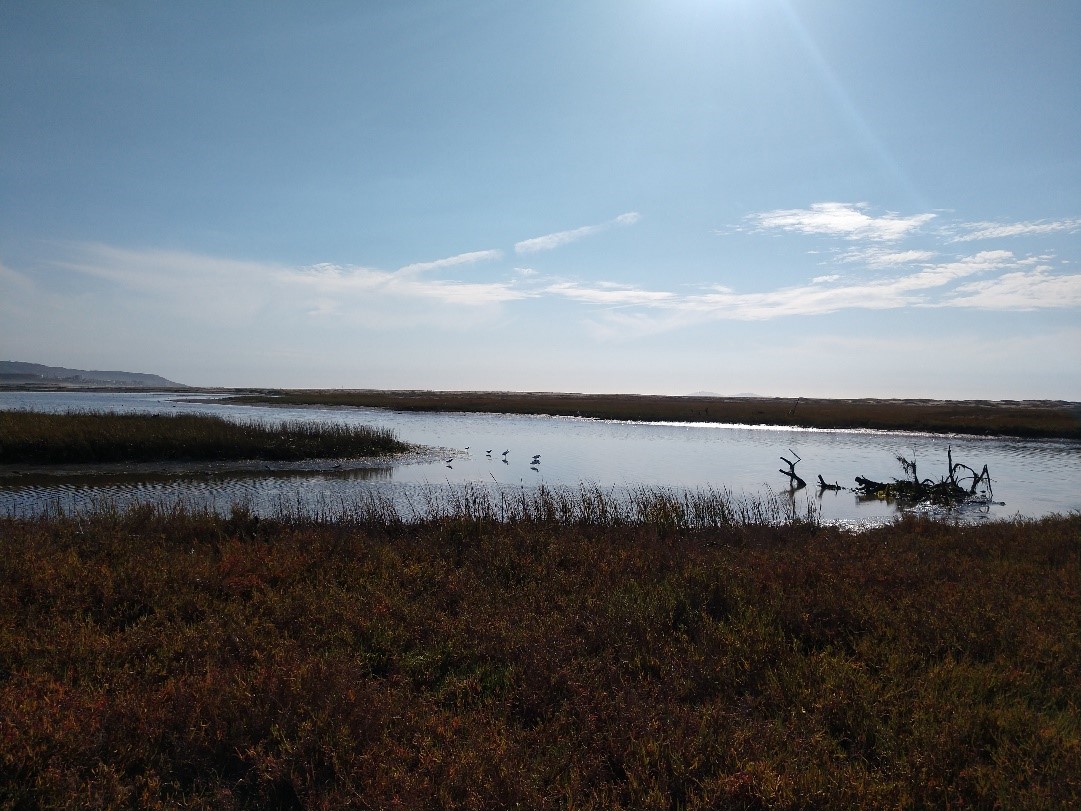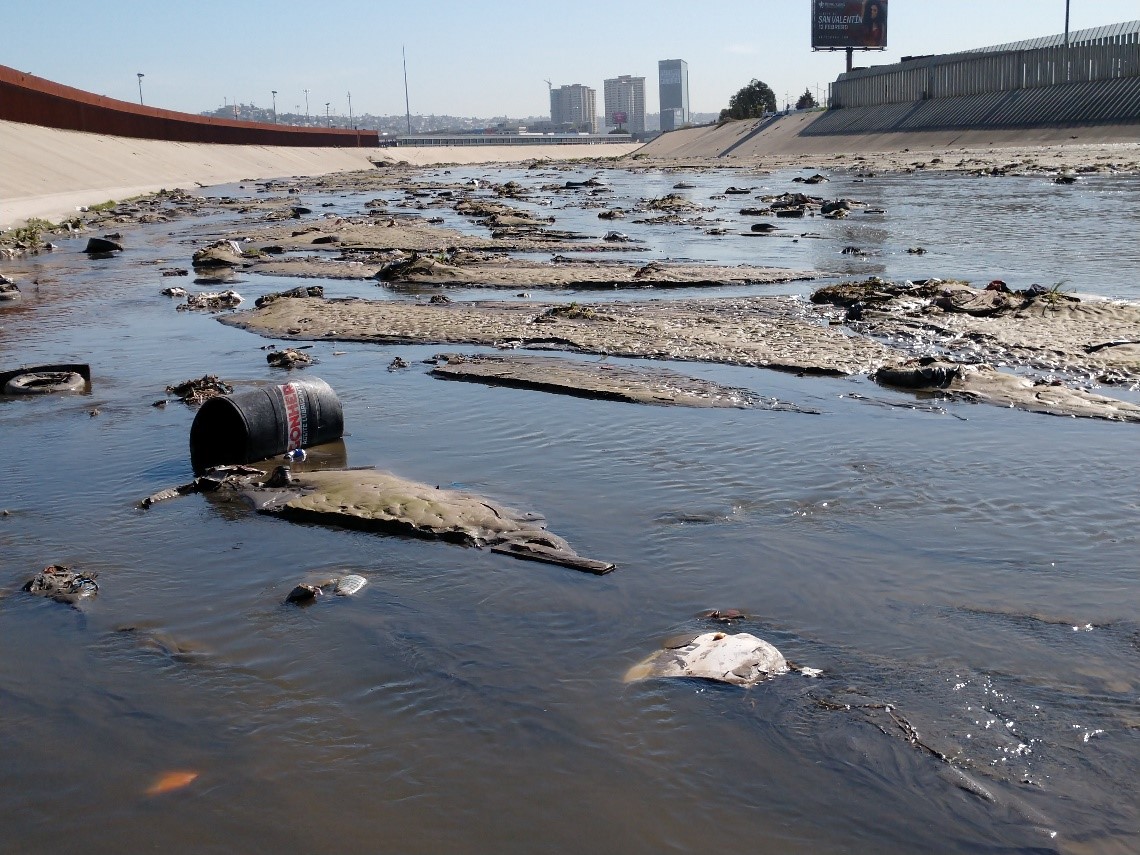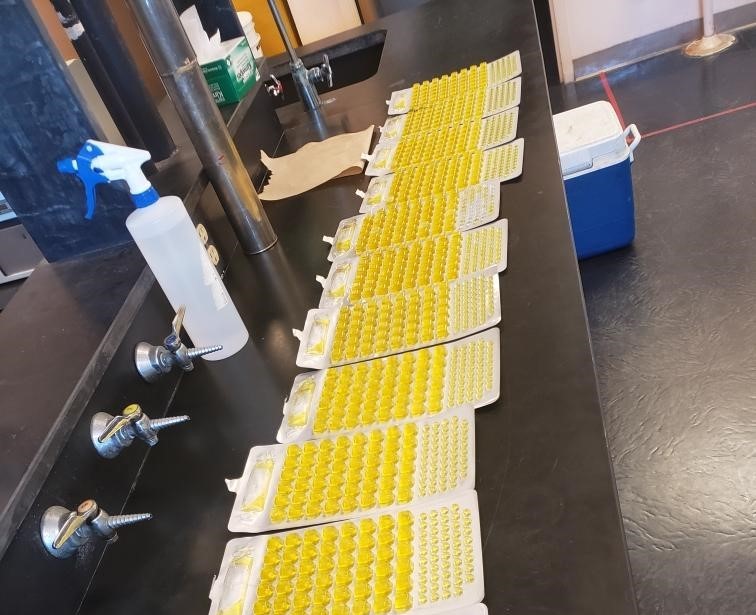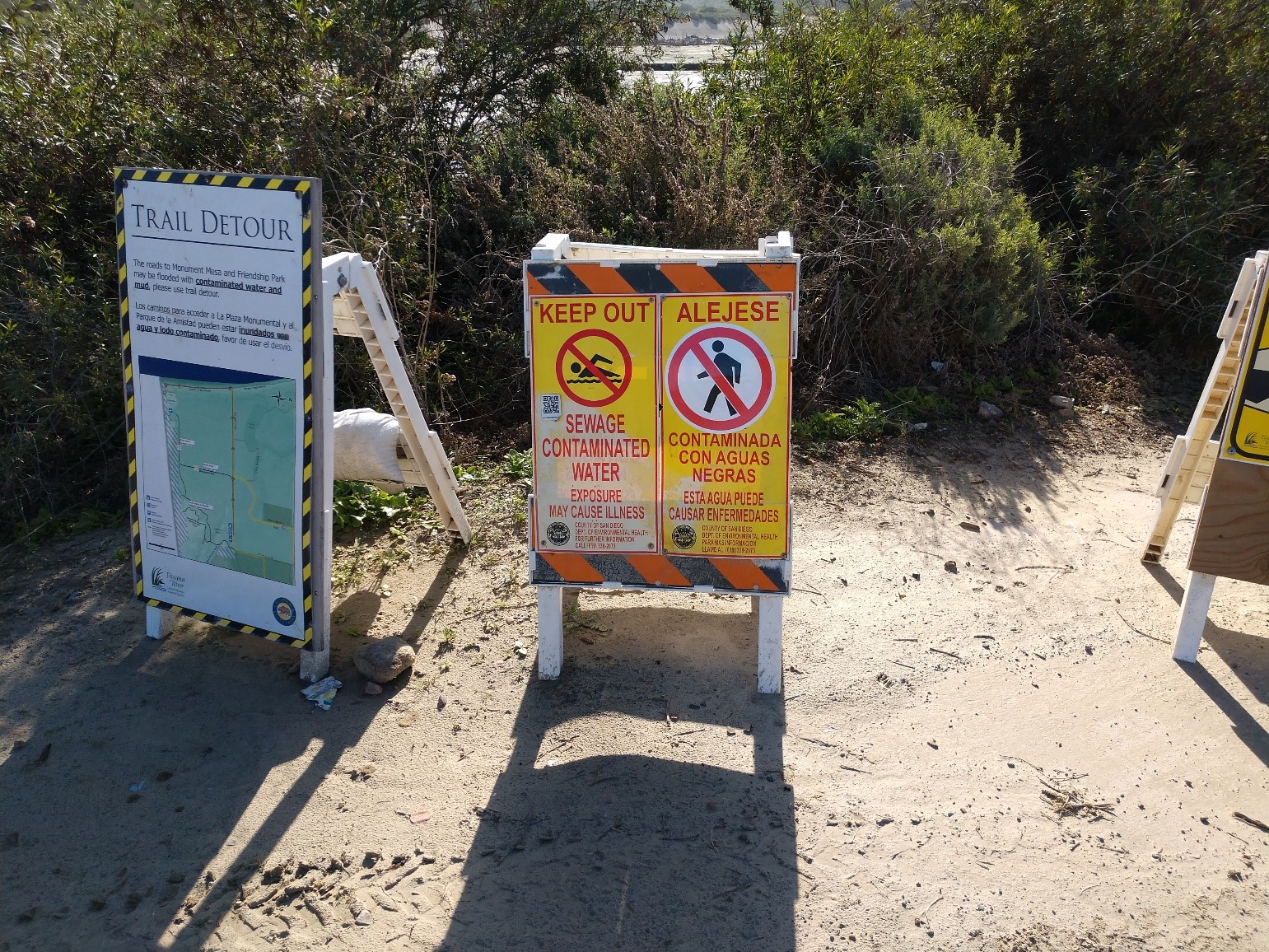Dr. Kari Sant and Dr. Rick Gersberg, San Diego State University
May 19, 2021

The Tijuana River Estuary is a resilient coastal watershed, home to
unique wildlife and beautiful recreation areas directly adjacent to
Imperial Beach and the U.S.-Mexico border.
The Tijuana River watershed is a unique coastal watershed comprising a vast system of rivers, aquifers, and estuary spanning the western boundary of San Diego County in the U.S. and northwestern Baja California in Mexico. This binational, shared watershed requires international cooperation on the establishment of policy and protection programs: several international, federal, and state agencies are involved in stewardship of the Tijuana River and Estuary. Together, these agencies have implemented key salt marsh/wetland restoration plans, local endangered and threatened species protection programs, and collaborative research investigating pollution and climate change impacts. These stewardship and protection programs help reduce the amount of pollutants such as sewage and trash coming from the estuary and impacting the shoreline of nearby communities.

Photo of the Tijuana River channel, directly adjacent to the Unidad Deportiva Benito Juárez (border shown at the right).
In mid-Fall 2018, a caravan of more than 6,000 migrant people (migrants) from Central America began a journey toward Mexico and the U.S. to flee economic, political, and physical persecution and violence in their home countries of El Salvador, Guatemala, Honduras, and Nicaragua. A large percent of this caravan reached the border in Tijuana, Mexico, in late November, hoping to seek asylum in the U.S. These people were detained in migration centers, the largest of which was established in the Unidad Deportiva Benito Juárez (UDBJ, Benito Juarez Sports Complex), located adjacent to the international border and fewer than 500 feet from the Tijuana River. The UDBJ’s sanitation infrastructure was inadequate and unable to meet the demands of the migrant population. A second facility with better infrastructure was opened further from the border, but many migrants remained at UDBJ.
The goal of this research was to assess the environmental impacts of this temporary settlement on sanitation and water quality. We sampled water quality at a dozen sites upstream and downstream of the UDBJ in the Tijuana River and Estuary watershed. Our objective was to quantify several bacterial metrics (total coliform, E. coli) and to determine the contribution of sewage using a bacterial DNA marker (HF-183). Graduate students from the SDSU Environmental Health program and undergraduate students from the SDSU Environmental Sciences program were directly involved in the collection and analysis of all water samples.
Map depicting the sampling locations for this study relative to the Tijuana River (shown in blue) and the Unidad Deportiva Benito Juárez.
In November 2018, the majority of migrants were living at the UDBJ. We conducted

Images of the IDEXX Colilert test, used to detect total coliform and
E. coli in border water samples. Yellow wells indicate the presence of
total coliform bacteria. These samples were collected after a major
rainfall, and diluted 10,000 times, yet still yielded completely
saturated results.

The County of San Diego maintains several parks near the border open
for recreation, placing signage to educate the public about the sewage
contamination and recommended behaviors to reduce health risks.
initial site visits and collected water samples in December 2018, and we conducted more extensive sampling in February 2019 once permits were obtained. Sampling sites upstream of UDBJ were supposed to serve as unimpacted reference sites for our study. However, in December 2018 and early 2019, many migrants left the UDBJ and diffused around the northern border of Tijuana, and migrants and homeless people were often seen near many of our sites on both upstream and downstream of the UDBJ. All of our sites had high levels of bacteria in the water indicating sewage contamination, with the exception of the sites closest to the river mouth (in the tidal mixing zone) on several sampling dates. Thus, we were unable to link sewage contamination downstream of the UDBJ solely to the temporary migrant settlement.
Next, we assessed the persistence of bacteria from near the UDBJ to farther downstream river and estuary sites. Throughout this study, 93% of samples collected had total coliform levels greater than published water quality objectives for recreational contact and 84% had elevated E. coli concentrations. However, total coliform levels in samples taken closest to the ocean were below these objectives. Total coliform densities in downstream estuary samples were 81-94% lower than water near the UDBJ, and E. coli levels were 77-97% lower. This suggests that the riparian areas along the Tijuana River on the US side of the border and tidal flushing in the estuary may reduce surface water microbial concentrations near the coast.
In summary, we were not able to detect an impact of the temporary migrant settlement at the UDBJ on microbial contamination in the Tijuana River because of high background contamination. Our data support the County of San Diego's beach and trail closures during these major rainfall events, which reduce human interaction with the high concentrations of bacteria in the water. We plan to follow up this work by assessing the microbial species in the water to help identify sources of bacterial contamination that may have the most impact on this ecosystem.